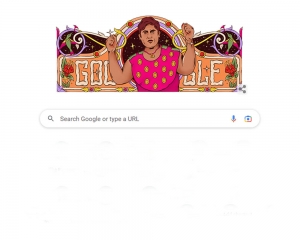Litigant Ram Lalla’s Contention (1989)
The suit was instituted in the name of Bhagwan Sri Ram Virajman at Sri Ram Janmabhumi, Ayodhya also called Bhagwan Sri Ram Lalla Virajman. Ram Lalla, considered under Indian law to be a “juristic person” and represented by his next human friend, Triloki Nath Pandey, a senior Vishwa Hindu Parishad leader , was among the litigants in the case pleaded that the “entire premises of Sri Ram Janmabhoomi” be decreed in its favour for construction of a new temple and other parties including Uttar Pradesh Sunni Central Wakf Board be prohibited from obstructing it.
Supreme Court’s Ruling
The five-judge constitution bench held the rights of Ram Lalla Virajman, the presiding deity of the disputed site. The bench held that the lawsuit of the deity was “within the period of limitation” and granted the title decree in its favour. The bench said: “The Central Government shall, within a period of three months from the date of this judgment, formulate a scheme” under the Acquisition of Certain Area at Ayodhya Act, 1993. The bench also held that it is beyond its jurisdiction to decide if the faith of the Hindus was valid or not but their belief that Lord Ram was born under the central dome has been proven genuine. “Hindus consider Ayodhya as the birthplace of Lord Ram. They have religious sentiments. Hindus have faith and belief that Lord Ram was born under the dome. The faith of Hindus that Lord Ram was born here is undisputed,” the bench said. The bench held the titles cannot be decided on faith and belief but on the claims. Rejecting challenges to the lawsuit of the deity, it said the possession of “inner and outer courtyards” be handed over to the trust or to the body so constituted.
Litigants Shia And Sunni Waqf Boards:
The Uttar Pradesh Sunni Central Waqf Board, which looks after religious properties, had demanded that the Babri Masjid be restored to the form that existed before it was brought down by the Hindu groups. Sunni Central Waqf Board, had first filed a suit staking ownership of the site in 1961, in which it had claimed possession of the masjid. They pleaded that building in the plaint is not place of Janambhoomi of Ram Chandra and plaintiff has no right and no Idols of Ram Chandra were ever installed in the said building. “There was no question of any right and claim to perform Puja and Darshan. There is no presiding deity of Lord Ram at the place in dispute. The idols were surreptitiously placed inside the mosque on the night of December 22-23 1949. There is neither any presiding deity nor a Janmasthan. The mosque was not constructed on the site of an existing temple or upon its destruction,” the Sunni Waqf Board pleaded. The Sunni Waqf Board argued that their possession of the land was evident from the fact that they received grants for maintenance of the mosque dating back as far as 1528.
Like Sunni Waqf Board, the Shia Central Board of Waqf was the party to the case since 1989. However, it only staked claim on the disputed land in July 2017. In August the same year, the Board had submitted an affidavit in the apex court challenging the claim of the Sunni Waqf Board that the land should not be given to Sunni Waqf Board.
Supreme Court’s Ruling
The SC bench dismissed the Shia Waqf board’s petition and directed the Centre to give five acres of suitable land to Sunni Waqf Board and also observed that ASI evidence suggest that there was a non Islamic structure but mere presence of a structure does not lay claim to the disputed land. The bench held that the land allocation has to be done by the Centre within three months. The bench held that the Sunni Central Waqf Board would be at liberty, on the allotment of the land to take all necessary steps for the construction of a mosque on the land so allotted together with other associated facilities”. “ The allotment of land to the Muslims is necessary as there was no abandonment of the mosque by the Muslims,” the bench said.
Litigant Nirmohi Akhara Contention
The Nirmohi Akhara, which was awarded one-third of the disputed land by the Allahabad High Court in 2010, had also made a claim to the entire disputed land stating that they were the original ‘pujaris’ who worshiped Lord Ram at the temple at his birthplace. Nirmohi Akhara had claimed that it is the Shebait or devotee of the idol of Lord Ram installed in the Ram Janmabhoomi temple and has the exclusive right to repair and reconstruct the temple.
Supreme Court’s Ruling
Nirmohi Akhara is not a Shebait, an authorised devotee, of deity Ram Lalla, the Supreme Court held on Saturday while dismissing its lawsuit in the Ayodhya land dispute case. The top court also said that the suit filed by the Akhara was time barred. “However, the presence of the Nirmohis around the disputed site does not amount to the exercise of management rights which entitle them in law to the status of a de facto shebait,” the bench said.

























